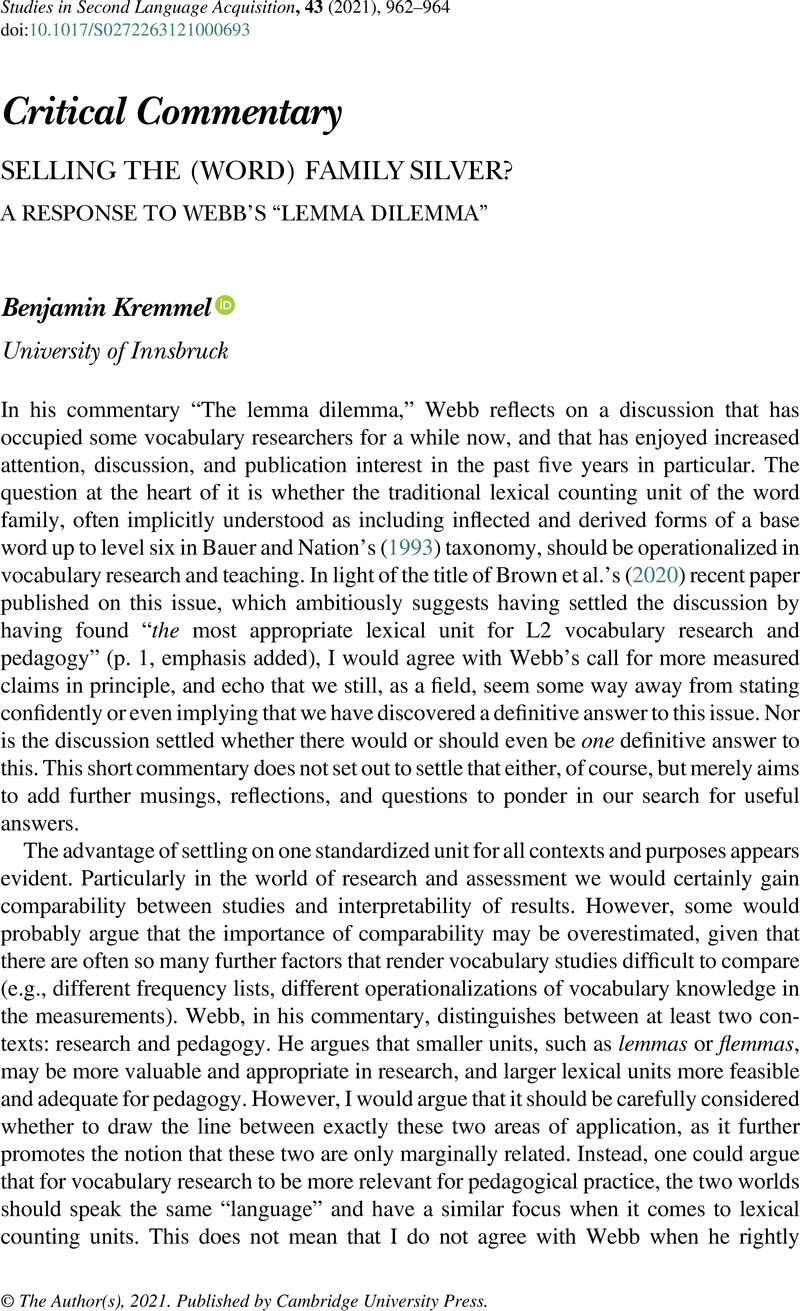Crossref Citations
This article has been cited by the following publications. This list is generated based on data provided by Crossref.
Webb, Stuart
2021.
WORD FAMILIES AND LEMMAS, NOT A REAL DILEMMA.
Studies in Second Language Acquisition,
Vol. 43,
Issue. 5,
p.
973.
Kremmel, Benjamin
Indrarathne, Bimali
Kormos, Judit
and
Suzuki, Shungo
2023.
Unknown Vocabulary Density and Reading Comprehension: Replicating Hu and Nation (2000).
Language Learning,
Vol. 73,
Issue. 4,
p.
1127.
Ha, Hung Tan
Le, Linh Thi Thao
Ho, Nam Thi Phuong
and
Trang, Nguyen Huynh
2023.
Measuring native‐speaker vocabulary size. PaulNation and AverilCoxhead, John Benjamins Publishing Company, Amsterdam/Philadelphia, 2021, xiii, 160 pp., Hardbound: ISBN 9789027208149, EUR 95.00; Paperback: ISBN 9789027208132, EUR 33.00; e‐Book: ISBN 9789027260291, EUR 95.00.
International Journal of Applied Linguistics,
Vol. 33,
Issue. 1,
p.
88.
Iwaizumi, Emi
and
Webb, Stuart
2023.
To What Extent Do Learner‐ and Word‐Related Variables Affect Production of Derivatives?.
Language Learning,
Vol. 73,
Issue. 1,
p.
301.
Vilkaitė-Lozdienė, Laura
and
Vilkienė, Loreta
2023.
Vocabulary size estimates for Lithuanian native speakers.
ITL - International Journal of Applied Linguistics,
Vol. 174,
Issue. 2,
p.
177.
Dudley, Amber
and
Marsden, Emma
2024.
The lexical content of high‐stakes national exams in French, German, and Spanish in England.
Foreign Language Annals,
Vol. 57,
Issue. 2,
p.
311.
Dudley, Amber
Marsden, Emma
and
Bovolenta, Giulia
2024.
A Context-Aligned Two Thousand Test: Toward estimating high-frequency French vocabulary knowledge for beginner-to-low intermediate proficiency adolescent learners in England.
Language Testing,
Vol. 41,
Issue. 4,
p.
759.
Iwaizumi, Emi
and
Webb, Stuart
2024.
The effect of test format on productive recall of derivatives.
ITL - International Journal of Applied Linguistics,
Vol. 175,
Issue. 2,
p.
242.




